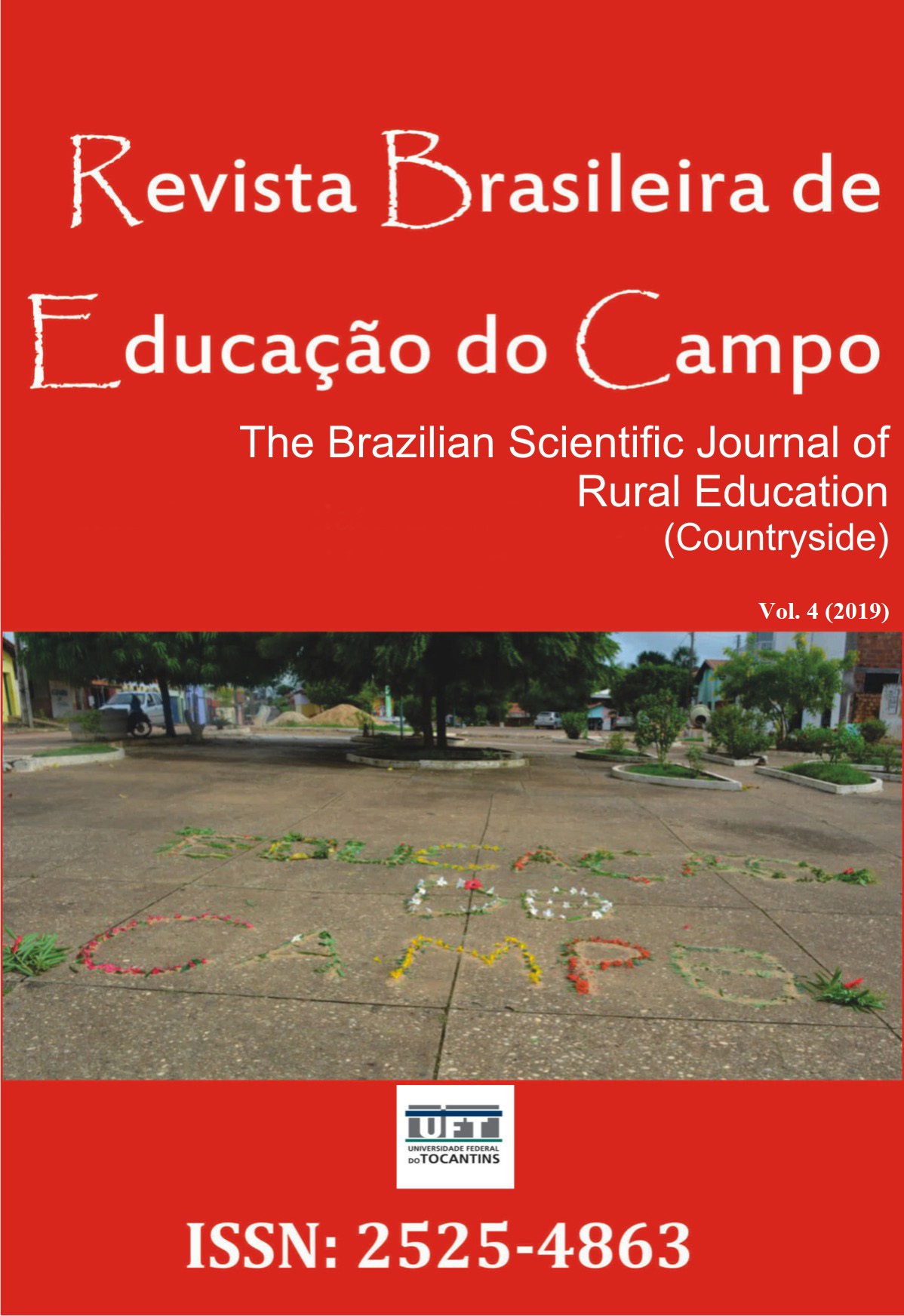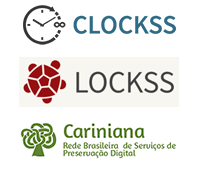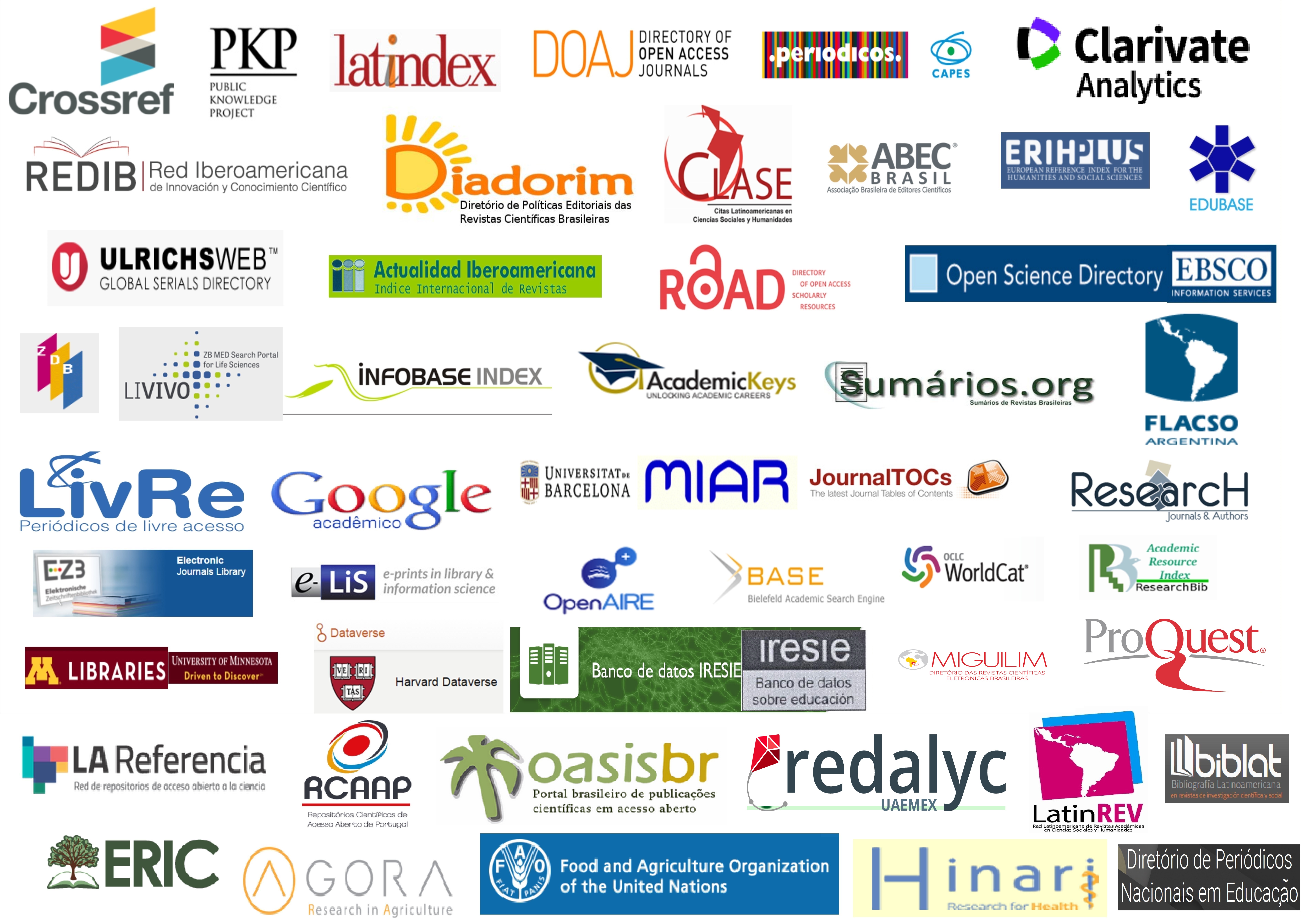O ensino em turmas multisseriadas e suas condições de trabalho: um olhar para as escolas do campo na região do Alto Solimões, Amazonas
DOI:
https://doi.org/10.20873/uft.rbec.v4e6230Resumo
A educação escolar oferecida a populações rurais esteve historicamente atrelada à concepção de atraso e precariedade. Nessas experiências rurais, o poder público parece ter investido em ações tímidas, na tendência de deixar a educação rural como segundo ou terceiro plano, tomando por referências educacionais a educação urbana (Batista, 2003). Tal problemática é evidenciada quando analisamos a situação de muitas turmas multisseriadas existentes na região do Alto Solimões, as quais parecem refletir a concepção do fracasso e precariedade escolar, suscitando a necessidade de reversão do cenário atual. Este artigo pretende discutir a educação do campo, da floresta e das águas na região do Alto Solimões, no Amazonas e, especificamente, tratar das turmas multisseriadas e as condições de trabalho vivenciadas por professores e alunos nestes ambientes. Para isso, realizou-se um levantamento das questões consideradas problemas, por meio da aplicação de questionários, entrevistas e oficinas com as crianças. O estudo revelou a existência de muitas turmas multisseriadas na região que, contrariando a visão predominante, parece ser a única alternativa de acesso à educação escolar em algumas localidades distantes. Constatou-se ainda, que a estrutura e infraestrutura escolar, bem como a valorização de professores e transporte escolar são demandas imprescindíveis para a melhoria das condições educacionais. Sobretudo é o que as crianças, professores e comunitários querem: uma nova escola do campo, capaz de garantir sucesso e aprendizagem em um espaço confortável e qualificado.
Palavras-chave: Educação do campo no Alto Solimões, Turma Multisseriada, Condições de Trabalho.
The teaching in multi-classes and their conditions of work: a look at the rural schools in the Alto Solimões Region, Amazonas
ABSTRACT. School education offered to rural populations has historically been linked to the concept of backwardness and precariousness. In these rural experiences, public power seems to have invested in timid actions, tending to leave rural education as the second or third plan, taking as educational references urban education (Batista, 2003). This problem is evidenced when we analyze the situation of many multisite groups existing in the Alto Solimões region, which seem to reflect the conception of school failure and precariousness, provoking the need to reverse the current scenario. This article intends to discuss rural education, forest and water education in the Alto Solimões region of Amazonas and, specifically, to deal with multi-classes and the working conditions experienced by teachers and students in these environments. For that, a survey of the issues considered as problems was carried out, through the application of questionnaires, interviews and workshops with the children. The study revealed the existence of many multi-classes groups in the region that, contrary to the prevailing view, seems to be the only alternative to access to school education in some distant localities. It was also verified that the structure and school infrastructure, as well as the valorization of teachers and school transportation are essential demands for the improvement of educational conditions. Above all, this is what children, teachers and community members want: a new school in the countryside, capable of guaranteeing success and learning in a comfortable and qualified space.
Keywords: Rural Education in Alto Solimões Region, Multi-classes Group, Work Conditions.
La enseñanza en turmas multiseriales y sus condiciones de trabajo: una mirada para las escuelas del campo en la Región del Alto Solimões, Amazonas
RESUMEN. La educación escolar ofrecida a las poblaciones rurales estuvo históricamente vinculada a la concepción de retraso y precariedad. En estas experiencias rurales, el poder público parece haber invertido en acciones tímidas, en la tendencia de dejar la educación rural como segundo o tercer plano, tomando por referencias educativas la educación urbana (Batista, 2003). Tal problemática es evidenciada cuando analizamos la situación de muchas clases multiserias existentes en la región del Alto Solimões, que parecen reflejar la concepción del fracaso y precariedad escolar, suscitando la necesidad de reversión del escenario actual. Este artículo pretende discutir la educación del campo, del bosque y de las aguas en la región del Alto Solimões, en el Amazonas y, específicamente, tratar de las clases multiseriales y las condiciones de trabajo vivenciadas por profesores y alumnos en estos ambientes. Para ello, se realizaron un levantamiento de las cuestiones consideradas problemas, por medio de la aplicación de cuestionarios, entrevistas y talleres con los niños. El estudio reveló la existencia de muchas clases multiseriales en la región que, contrariando la visión predominante, parece ser la única alternativa de acceso a la educación escolar en algunas localidades distantes. Se constató también que la estructura e infraestructura escolar, así como la valorización de profesores y transporte escolar son demandas imprescindibles para la mejora de las condiciones educativas. Sobre todo es lo que los niños, profesores y comunitarios quieren: una nueva escuela del campo, capaz de garantizar éxito y aprendizaje en un espacio cómodo y calificado.
Palabras clave: Educación del Campo en el Alto Solimões, Clases Multiseriales, Condiciones de Trabajo.
Downloads
Publicado
Como Citar
Edição
Seção
Licença
Proposta de Aviso de Direito Autoral Creative Commons
1. Proposta de Política para Periódicos de Acesso Livre
Autores que publicam nesta revista concordam com os seguintes termos:
a. Autores mantém os direitos autorais e concedem à revista o direito de primeira publicação, com o trabalho simultaneamente licenciado sob a Licença Creative Commons Attribution que permite o compartilhamento do trabalho com reconhecimento da autoria e publicação inicial nesta revista.
b. Autores têm autorização para assumir contratos adicionais separadamente, para distribuição não-exclusiva da versão do trabalho publicada nesta revista (ex.: publicar em repositório institucional ou como capítulo de livro), com reconhecimento de autoria e publicação inicial nesta revista.
c. Autores têm permissão e são estimulados a publicar e distribuir seu trabalho online (ex.: em repositórios institucionais ou na sua página pessoal) a qualquer ponto antes ou durante o processo editorial, já que isso pode gerar alterações produtivas, bem como aumentar o impacto e a citação do trabalho publicado (Veja O Efeito do Acesso Livre).
Proposal for Copyright Notice Creative Commons
1. Policy Proposal to Open Access Journals
Authors who publish with this journal agree to the following terms:
A. Authors retain copyright and grant the journal right of first publication with the work simultaneously licensed under the Creative Commons Attribution License that allows sharing the work with recognition of its initial publication in this journal.
B. Authors are able to take on additional contracts separately, non-exclusive distribution of the version of the paper published in this journal (ex .: publish in institutional repository or as a book), with an acknowledgment of its initial publication in this journal.
C. Authors are permitted and encouraged to post their work online (eg .: in institutional repositories or on their website) at any point before or during the editorial process, as it can lead to productive exchanges, as well as increase the impact and the citation of published work (See the Effect of Open Access).














